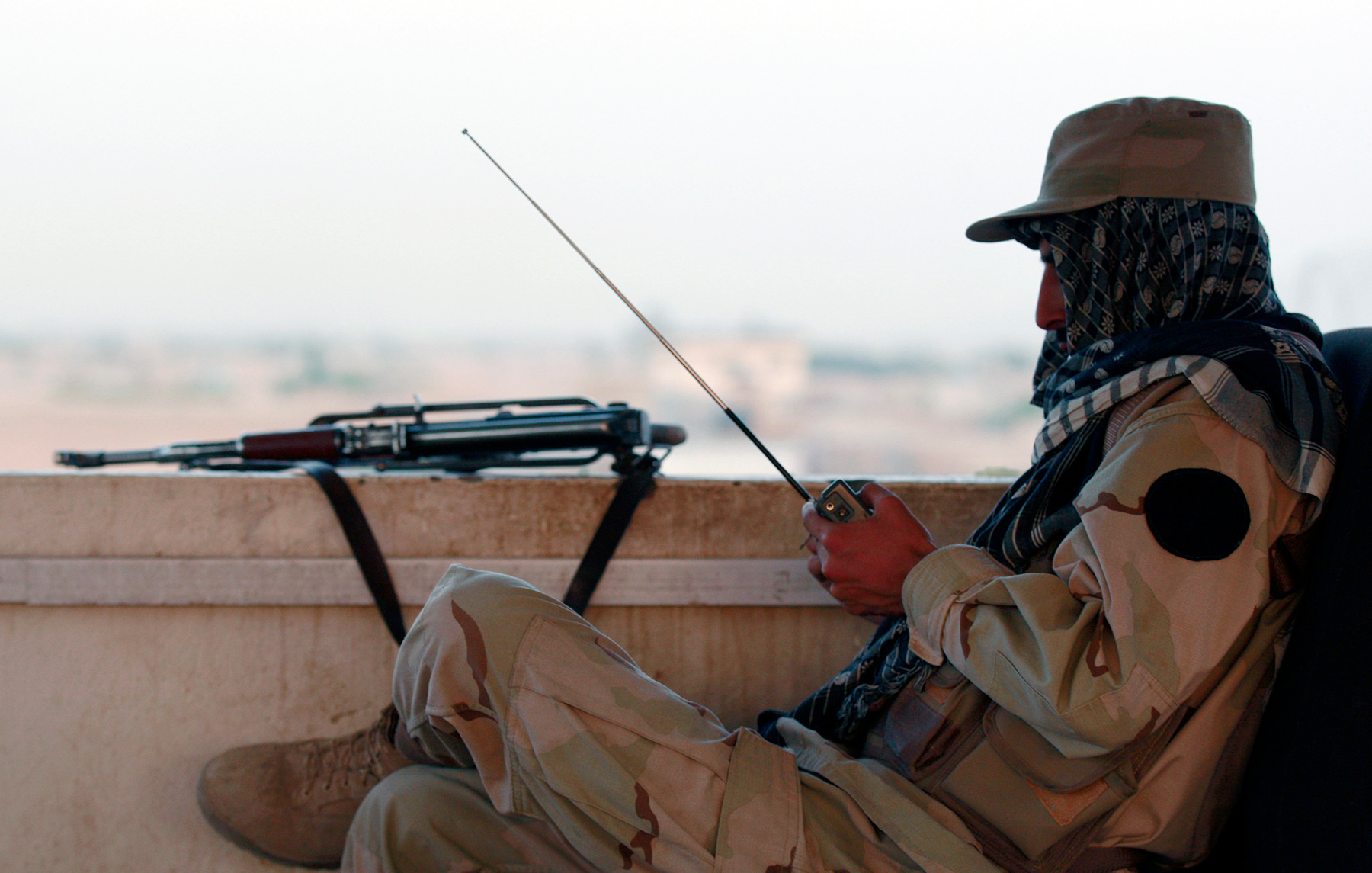Why is it that in the progressive 21st century we keep reading the news about the mockery of the wounded, the shootings of POWs and other horrors that the Law of The Hague and the Law of Geneva have failed to overcome? Six key reasons can be identified.
First of all, the universal reason for the low effectiveness of international humanitarian law is that the obligations under treaties and conventions are assumed by states as legal entities (abstract, powerful and invisible), while clashing on the battlefield are flesh-and-blood people with their intricate inner worlds, who are not always even aware of the rules of warfare that states have approved.
Second, the problem is that we see fewer “textbook wars” than any time before. Most present-day military actions are nothing else than various forms of sprawling civil wars or proxy conflicts involving parties not directly engaged in warfare.
Third, restrictive conventions presuppose voluntary participation of all states, while far from all treaties regulating the use of certain types of weapons have been signed and ratified by all nations.
Fourth, one of the least elaborated issues in international law is the international responsibility of both individuals and states for violations of the norms of military and humanitarian law.
Fifth, the coverage of warfare is now of critical importance. In the absence of conventions regulating interaction in the media field, states put no bridle on the means used in information wars.
Sixth, conventions are designed for a hypothetical “ideal war” which has a clearly defined range of parties and a limited theater of military action, with civilian population evacuated before the onset of hostilities, while the military confrontation resembling a chess game where the opponents make successive moves, destroying each other’s military facilities by using precision strikes. It is absolutely clear that such a perfect situation can exist only on paper.
Do we have any detailed and documented rules of military engagement today? Yes. Are these rules regularly followed? Mostly not. Does this mean that there is something wrong with the rules themselves and that international humanitarian and military law as a whole are futile? No.
From the Hague to Geneva: enshrining the rules of warfare
Mankind’s known history is a history of wars. War has been both a driver of technological progress and a means of winning top spots on the geopolitical Olympus, much as a source of political and economic motivation and a powerful rallying factor for peoples and nations.
The Latin expression vae victis (“woe to the vanquished”) was quite accurate in reflecting the unenviable prospects for the losing side: huge contributions, plundering of land, the local population turned slaves for hard labor. Not surprisingly, any weapon could be used to gain victory, poisons and armaments playing their part in doing maximum damage.
The atrocities used in warfare throughout most of the ages have been extremely high. Captured soldiers were subjected to most brutal executions and abuse—they were tortured, impaled on a stake, maimed, burned alive. Foreign women were raped and taken captive. Severed heads of the enemies were flung into besieged cities with catapults, and plague corpses were thrown into wells.
In this paradigm, it is not far from surprising that no humanism or regulation of warfare was even discussed for hundreds of years. Thus, the legendary military theorist Carl Clausewitz believed that “introducing the principle of restraint and moderation into the philosophy of war is an utter absurdity.” [1]
Nevertheless, attitudes to war gradually began to change in the 19th century, initially at the level of civic initiatives in different countries. Pacifist societies and assemblies began cropping up, such as the New York Peace Society (1815) and London Peace Society (1816). General Peace Congresses were conducted in Paris (1849) and Glasgow (1901), while the efforts of the Swiss Henri Dunant saw the establishment of the International Committee of the Red Cross in 1863, the inaugural international non-governmental organization to assist victims of wars and conflicts.
Exactly 155 years ago, the St. Petersburg Declaration on Explosive Projectiles was signed on the initiative of the Russian Empire, with a view to abolish the use of explosive and incendiary bullets. In fact, this was the only way to humanize war—limiting the use of weapons that either caused serious injury or slow and agonizing death.
Notably, even the not-so-substantial restrictions on warfare proposed in the 19th century aroused fierce resistance and misunderstanding among representatives of some states. Not everyone shared the humanist vision, citing the impracticability and unattainability of any such initiatives.
For example, this is what British Admiral J.A. Fisher declared in 1899: “The humanizing of war? You might as well talk about the humanizing of Hell! […] The essence of war is violence! Moderation in war is imbecility! Strike first, strike hard, strike everywhere!” [2]. That approach was challenged by the Russian lawyer F.F. Martens who authored the famous “Martens Clause” on the need to introduce “the principles of humanity and the requirements of public conscience” into warfare. That Clause was later included in all key documents of humanitarian law.
The international conferences in The Hague back in 1899 and 1907 brought about the so-called Law of The Hague, mainly dealing with rules of conducting hostilities and establishing limitations or prohibitions on specific means and methods of warfare. This was the first regulatory phase only. Many documents were adopted that described in detail the general rules of warfare at sea and on the ground. The main restriction was the prohibition on the use of specific weapons, particularly projectiles that spread asphyxiating or noxious gases and bullets that easily unfold or flatten in the human body.
Did the Law of The Hague keep mankind out of World War I, where chemical weapons were first used? No. Was it helpful in terms of a smooth shift in the prevailing paradigm? Yes.
The second great leap in codifying the rules of warfare came after World War II and was known as the Law of Geneva. In addition to updating the articles governing the rules and customs of warfare, the Law of Geneva aimed to improve the fate of those who, by a fluke of providence, have been affected by military conflict. The third article, common to all four of the 1949 Geneva Conventions, refers to the need for humane treatment of the wounded, the prohibition on taking hostages, the ban on torture and degrading treatment [3].
Why is humanitarian law one of the most codified and least respected branches of international law these days?
Indeed, why is it that in the progressive 21st century we keep reading the news about the mockery of the wounded, the shootings of POWs and other horrors that the Law of The Hague and the Law of Geneva have failed to overcome? Six key reasons can be identified.
First of all, the universal reason for the low effectiveness of international humanitarian law is that the obligations under treaties and conventions are assumed by states as legal entities (abstract, powerful and invisible), while clashing on the battlefield are flesh-and-blood people with their intricate inner worlds, who are not always even aware of the rules of warfare that states have approved.
In any field where people are involved, the human factor plays a major role, given that every individual has their own moral and ethical idiosyncrasies. As I study international humanitarian law with my students, I give them the following assignment: “Close your eyes and imagine: you are a crusader in the 11th century, fighting the Saracens for Jerusalem. Imagine the fury of the battle, the screams, the smell of blood and sand. The battle is luckily over, and you’re resting at a sun-heated stone wall. All of a sudden, you notice a young, frightened girl from the local community, trying to lurk to a nearby well to draw some water. What would you do?” An important condition of this task is that it’s almost ten centuries before any humanitarian law even loomed, and any action that comes to mind (from raping a foreign girl to taking her captive) is not punishable at all by the laws and customs of those days. Believe me, the answers are of interest not only from a legal perspective but also in terms of psychology. Moreover, in military and humanitarian law, psychological and moral aspects are often far more important than legal regulations.
In modern war, combatants fall into three types:
— those who would violate the norms of humanitarian law anyway, notwithstanding the likely punishment (they’d use torture, shoot prisoners of war, jab at the wounded, scoff at corpses, etc.);
— those who are deterred from using violence and extreme cruelty by the prospect of punishment;
— those who adhere to the principles of humanity even toward their enemies, because of their personal moral attitudes rather than some legal regulations.
Second, while humanitarian law “does not resolve the issue of legality or illegality of armed conflicts, dealing with an armed conflict per se, regardless of its causes” [4], the current military law is arguably designed for a classic military standoff.
The problem is that we see fewer “textbook wars” than any time before. Most present-day military actions are nothing else than various forms of sprawling civil wars or proxy conflicts involving parties not directly engaged in warfare.
Suffice it to ask whether Russia is now at war with NATO that actively supports Ukraine not just politically, but also with arms and military equipment. In this case, can the military facilities and sites of NATO member states be seen as legitimate targets for the Russian army? This is not an idle inquiry, given that no formal action to declare war has been taken by the parties. Moreover, NATO’s Secretary-General disavows any claims that the Alliance is party to the Ukrainian conflict, despite the abundant evidence to the contrary.
Third, the idea of limiting specific types of weapons has a number of fundamental flaws.
— Restrictive conventions presuppose voluntary participation of all states, while far from all treaties regulating the use of certain types of weapons have been signed and ratified by all nations. That is why the “banned weapons” phrase has more of a journalistic than a legal context.
— States can violate even those obligations that they undertake voluntarily. For example, Ukraine is party to the 1997 Convention on the Prohibition of the Use, Stockpiling, Production and Transfer of Anti-Personnel Mines, which does not prevent it from actively using PFM-1 anti-infantry mines, known as “butterfly mines” or “petal mines”, and in crowded civilian areas to boot.
— For some types of weapons, there are still no restrictive conventions at all (e.g., depleted uranium weapons and ammunition). The European Parliament has on several occasions called for a ban on depleted uranium weapons, but NATO member states have consistently denied the link between the use of these weapons and their adverse health effects on the military and civilians.
Fourth, one of the least elaborated issues in international law is the international responsibility of both individuals and states for violations of the norms of military and humanitarian law [5]. Besides, there is practically no case law on prosecution of international organizations, such as NATO. The fact that international conventions are signed by nation states and impose obligations specifically on these signees, rather than on inter-state associations, is another restraining factor. The issues of accountability are further complicated by the active involvement of new actors in military conflicts, such as mercenaries and private military companies.
Fifth, the coverage of warfare—which, thanks to modern information technology, represents a separate, full-fledged segment of contemporary military confrontation—is now of critical importance. In the absence of conventions regulating interaction in the media field, states put no bridle on the means used in information wars.
Sixth, waging modern warfare in exact accordance with the letter and spirit of the Geneva Conventions is extremely difficult and practically impossible in some situations. The point is that the conventions are designed for a hypothetical “ideal war” which has a clearly defined range of parties and a limited theater of military action, with civilian population evacuated before the onset of hostilities, while the military confrontation resembling a chess game where the opponents make successive moves, destroying each other’s military facilities by using precision strikes. It is absolutely clear that such a perfect situation can exist only on paper.
1. Clausewitz C. On War: [In 2 vols.] M.: AST; SPb.: Terra Fantastica, 2002. С. 24.
2. Quoted in Eyeffinger A. The 1899 Hague Peace Conference: “The Parliament of Man, the Federation of the World.” The Hague, 1999, p. 257.
3. See First Geneva Convention for the Amelioration of the Condition of the Wounded and Sick in Armed Forces in the Field, 1949; Second Geneva Convention for the Amelioration of the Condition of Wounded, Sick and Shipwrecked Members of Armed Forces at Sea, 1949; Third Geneva Convention relative to the Treatment of Prisoners of War, 1949; Fourth Geneva Convention relative to the Protection of Civilian Persons in Time of War, 1949.
4. Aleshin V.V. International Humanitarian Law under Hybrid Action and Changes in International Relations // Bulletin of Military Law, No. 1, 2023. p. 8.
5. For more detail see Sazonova K.L. Prospects of Bringing States to International Responsibility for Violations of International Humanitarian Law // Legal Paradigm. 1 (17), 2018.







